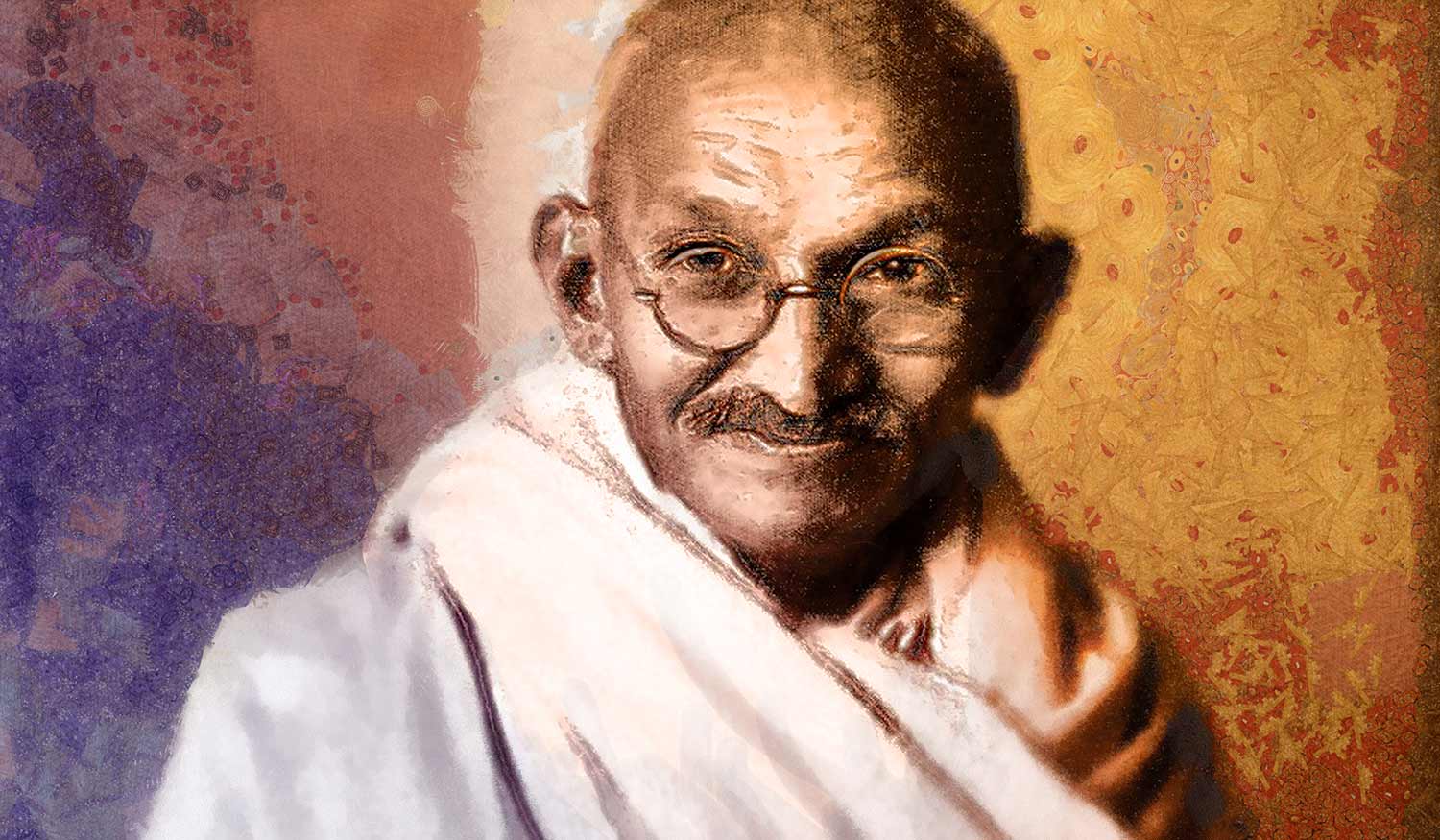
The Mahatma, the Bapu, the Visionary, The Architect of Peace.
As we celebrate the January 15th birthday of America’s greatest non–violent civil rights leader, Dr. Martin Luther King, we should also honor his mentor and role model, Mohandas Gandhi, who died on January 30th, 1948. Both of these Princes of Peace were taken from the world too soon by assassin’s bullets, the truth of their message of universal love and unity being too much to bear by the purveyors of ancient hatreds and eternal divisions.
Gandhi’s career in pursuing social justice began as a London–schooled Indian attorney seeking justice for Indian immigrant workers in South Africa. It was there that he first employed non–violent civil disobedience as a tactic in the struggle for civil rights. Upon returning to India, he assumed a leadership position in the movements for easing poverty, women’s rights and, most importantly, independence from the British Empire and self–rule. He was imprisoned many times and engaged in many long protest fasts in his years of non–violently battling for Indian freedom from Britain.
Britain finally conceded Indian independence in August, 1947, but at a savage cost.
Whereas Gandhi had envisioned an India based on religious pluralism, the retreating British backed the newly empowered Hindu and Muslim nationalists seeking to “purify” their own turfs. India was partitioned into Hindu–majority India and a new country, Muslim–majority Pakistan. As displaced Hindus, Muslims, Sikhs and other groups made their desperate journeys to their new “homelands,” religious violence broke out, including massacres of innocent men, women and children. Gandhi skipped the big “independence celebration” in the capitol, rushing instead to the violence–torn areas. He immediately began a series of “fasts unto death” as a plea to stop the fighting and promote religious harmony. Several months into this last selfless sacrifice, a Hindu nationalist assassinated him.
What Gandhi and his exemplary follower, Martin Luther King, gave to us is something even more important than a tested blueprint for non–violent civil disobedience as a viable form of protest and social change. They left us the shining examples of their very lives. Because of their lifetimes of struggle and the sacrifice of their lives, when John Lennon, another martyr to universal peace, sang, “You may say I’m a dreamer,” no one with any familiarity with the achievements of Gandhi and King could ever again dismiss the power of peaceful non–violent protest, and the “dreamers” who practice it, as a very real means for transforming our world.
Featured Gallery
Your Thoughts
- Have you ever engaged in an act of nonviolent civil disobedience to protest an injustice? Did the experience “grow” you as a person, or only deepen your cynicism?
- Have you ever used your art as a form of social protest? Did your immediate circle of family, friends and fellow artists approve or disapprove of you lending your creative powers to a cause?
- Do you think that every time a politician or a performing artist must “press the flesh” of a crowd of adoring fans, they have thoughts of the fates of Gandhi, King and Lennon in the backs of their minds? Would you be able to deal with this sort of constant stress?











































